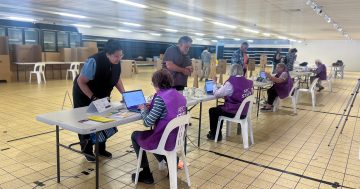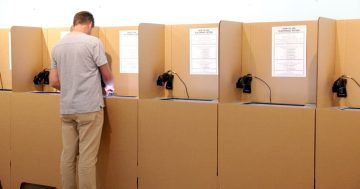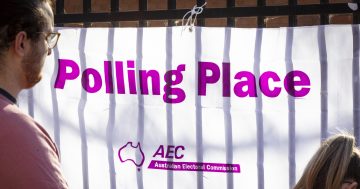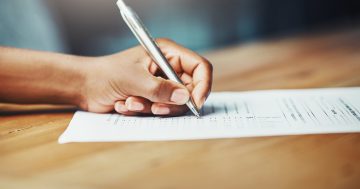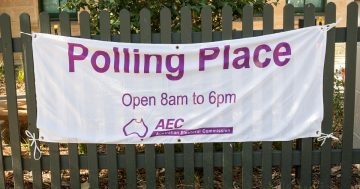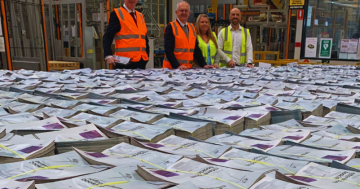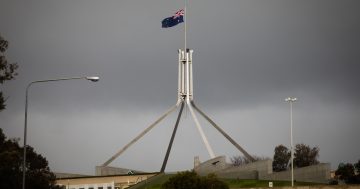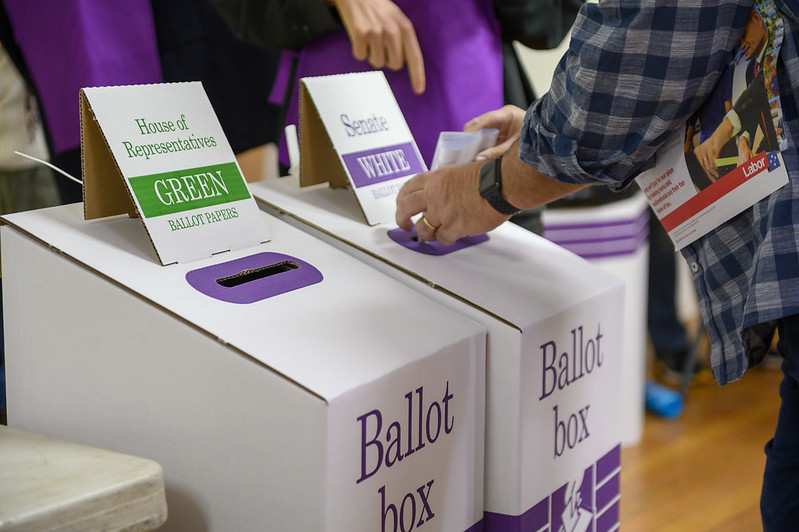
The 2022 federal election will be held Saturday, 21 May. Photo: AEC.
If the slew of political adverts you’re currently being subjected to on your televisions, social media, radio and roadsides haven’t yet given it away, there’s a Federal Election campaign going on.
Voting day – Saturday, 21 May – is fast approaching and here’s everything you need to know beforehand.
Do I have to vote?
Yes. Voting is compulsory in Australia.
If you’re over 18 and an Australian citizen, you’ll be fined $20 for not voting without a reasonable excuse for not having done so.
How do I vote?
On the day, you’ll be handed two bits of paper and asked to go alone to a voting booth.
The smaller, green piece of paper is for the House of Representatives and the big white one is for the Senate.
On the Senate ballot paper, you can vote in one of two ways.
You can either number at least six boxes above the (very thick, black, hard-to-miss line) to indicate the parties or groups you prefer in the order of your choice. You can stop when you reach six or keep going.
Or you can vote below the line. This means you vote individually for the candidates nominated by each party or group. In this case, you must number at least 12 boxes to cast a valid vote, although you can keep going if you want to.

The Senate ballot paper will pretty much look like this. Image: File.
The House of Representatives’ paper is a bit different. You have to place a number in every box in order of your preferences.
So, you place a ‘1’ in the box next to your first choice, ‘2’ next to your second choice and so on until you’ve numbered every box.
Once you’re done, you simply fold the two bits of paper and pop them in the right box.
There’s help available if you need it, and if you make a mistake, you can get another paper.
Ballot papers have to be completed properly or they won’t be counted.
What’s all this fuss about preferences?
Parties can hand out ‘how to vote’ cards that direct voters towards the parties and candidates they are encouraging you to preference and the order they are encouraging you to list them in.
But you don’t have to follow these recommendations if you don’t want to.
The AEC recommends voters ask themselves who they would most like to see and who they would least like to see in Parliament representing them and put candidates and parties in that order.
Where do I vote?
There will be 110 polling places set up in schools, community centres and other buildings across the ACT.
Polls open at 8 am and close at 6 pm sharp (so don’t be late, or you’ll be fined $20).
Find your closest centre at the AEC website.
The AEC also has information about wheelchair access at voting locations.
What electorate am I in?
You can find this at the AEC website by simply typing in the postcode of the address you’re enrolled in.

Andrew Barr and his husband Anthony Toms enjoy a ‘democracy sausage’ at North Ainslie Primary School at the ACT election in 2020. Photo: Michael Weaver.
Can I get a democracy sausage?
Probably, but don’t quote us on that one. There is an online resource to help you find a polling place with sausage sizzles if you’re really concerned, though.
The ACT Government also has a list of participating schools where you can purchase even more than a sausage (think cakes, coffee and even books, soap and plants in some cases).
What if I can’t go on the day?
Early polling centres have been open since Monday, 9 May, for anyone unable to make it to a polling place on the day. Early voting ends on Friday, 20 May.
As of Wednesday (11 May) evening, 18,019 people had already cast a pre-poll vote in the ACT.
Early votes aren’t counted until 6 pm on Election Day when all votes have been cast (although they can be unfolded, stacked and checked off against the roll if required).
Applications for postal votes are open until 18 May. These need to be posted on or before Election Day.
Phone voting is also available for anyone who has blind or low vision.
This year, anyone who has to isolate because of COVID-19 can also vote over the phone.
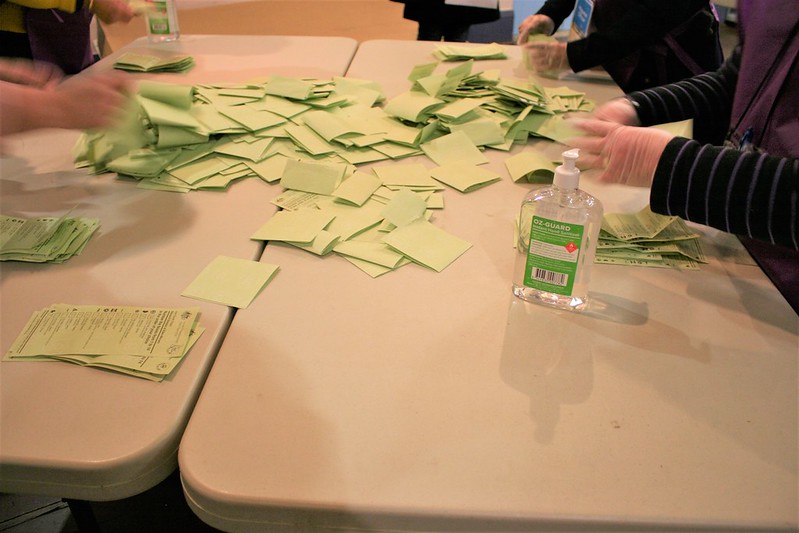
Votes being counted after the recent Eden-Monaro by-election. Photo: AEC.
What happens next?
Counting! And lots of it by thousands of Australian Electoral Commission volunteers.
All you have to do is sit back and wait to hear the result.












